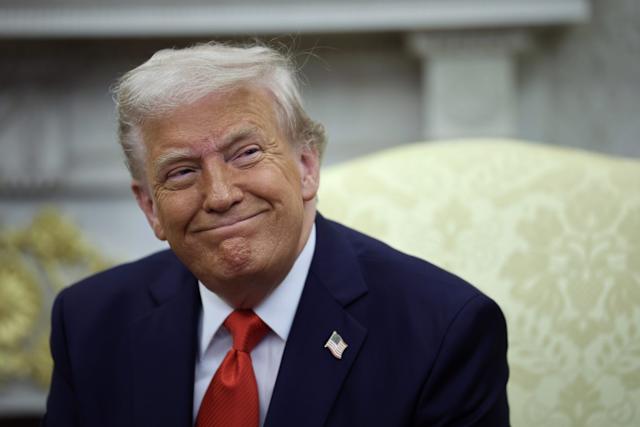
-
Wall Street analysts underestimated June’s U.S. jobs report, expecting weak growth due to negative private payroll data and President Trump’s angry social media posts. Today, analysts have explanations for their error: “Seasonal noise” around government hiring skewed the numbers upward, they say, and payrolls are in fact pretty weak. Meanwhile, global markets saw mild declines today, partly from profit-taking after recent highs.
You may have noticed yesterday that there was a bunch of chatter prior to the U.S. Bureau of Labor Statistics’ latest report that the number of new jobs created might be lower than the 110,000 consensus estimate. Analysts at Goldman Sachs, UBS, and Pantheon Macroeconomics all said they thought the number might be weaker than predicted. The ADP private payroll report, published before the official government number, showed a 33,000 decline in jobs.
In the event, the number of nonfarm payroll jobs increased by 147,000 in June, the bureau said—way above expectations.
So why did so many people get this wrong?
The fact that President Trump was tweeting angrily about U.S. Federal Reserve Chair Jerome Powell the night before distracted many, who read into those social media posts that perhaps he had seen a preview of the jobs report, didn’t like it, and was—as usual—trying to set up Powell as the fall guy.
That turned out to be a false signal.
A day later, the analysts have sifted the labor data and now have explanations for their errors. The report does show signs of weakness in private company hiring, these analysts say, it’s just that it is being masked by a sudden seasonal bump in government and education jobs.
“Private demand for labor is slowing,” Pantheon’s Samuel Tombs said in a note to clients after the official number came out. “The robust headline figure is entirely due to a massive 80K increase in state and local government payrolls, of which 64K are education jobs. … This large boost probably will unwind in July.”
“Private payrolls excluding healthcare and education rose by just 23K, well below the 50K average pace in the previous 12 months. Fundamentally, then, this is a weak report,” he said.
UBS analyst Paul Donovan took a similar line: “The US June employment report was strong enough in the headline to dispel ideas of a sudden US interest rate cut. It was troubling enough in the detail to suggest a more negative outlook for the US economy. Job creation was very narrowly focused.”
As did Bruce Kasman et al at JPMorgan: “The June surge in state and local hiring likely reflects seasonal noise.”
Story ContinuesSame tune at Daiwa Capital Markets: “Private-sector payroll growth totaled only 74,000, only a bit more than half of the approximately 143,000 average in the prior six months and the weakest reading since last October when the Fed was initially easing monetary policy in a recalibration designed to support the labor market,” said Lawrence Werther and Brendan Stuart.
Nonetheless, jobs are jobs. The overall unemployment rate stayed roughly the same. Analysts have largely been expecting Trump’s tariff regime to damage the U.S. economy (tariffs make everything more expensive and thus suppress hiring) but that damage still hasn’t really showed up—yet.
“The data suggest that firms are not yet slashing payrolls but are instead responding to policy uncertainty by slowing hiring,” Daiwa’s Werther and Stuart said.
The U.S. markets are closed today for the Independence Day holiday.
In their absence, global markets—many of which are at or near their all-time highs—seem to be selling off a bit to solidify their recent gains. Stoxx Europe 600 fell 0.76% in early trading.
The biggest drama was in South Korea, where the Kospi lost 1.99% after a sharp recent climb. It’s not clear if that was triggered by anything other than traders locking in their gains, but Trump’s announcement that he would begin sending letters to foreign countries today imposing tariffs of between 10% and 70% likely did not help.
Here’s a snapshot of the action from this morning.
-
S&P 500 futures are trading down 0.58% today.
-
The S&P 500 hit yet another record high yesterday after rising 0.8%.
-
Nasdaq Composite rose 1% yesterday.
-
China’s CSI 300 was up 0.36% this morning.
-
Japan’s Nikkei 225 was flat.
-
Stoxx Europe 600 fell 0.76% in early trading.
-
South Korea’s Kospi lost 1.99% after a sharp recent climb.
This story was originally featured on Fortune.com
The misinterpretation of job numbers by Wall Street analysts underscores the need for deeper understanding and careful evaluation when interpreting economic data, as it highlights a failure to appreciate subtle shifts that can significantly impact employment trends.
The misinterpretation of job numbers by Wall Street highlights a deeper mishandling in data analysis and foresight, underlining the need for more rigorous methodologies to accurately predict economic trends.
The miscommunication on the jobs data by Wall Street was infamously incorrect due to an array of fundamental and political factors incongruently influencing various macroeconomic indicators.
The disparity between Wall Street expectations and the actual jobs report illustrates a failure to comprehend economic ground realities, merging too closely with an overhyped forecast culture rather than advocating for prudent data analysis.
A deep-dive into the reasons behind Wall Street's misinterpreting of employment numbers exposes a lackadaisical approach to data analysis and overreliance on surface metrics, leading ultimately as an incorrect assessment that affects market sentiments.
Article strictly critiquing how Wall Street misinterpreted employment numbers, exposing the incorrect methodologies utilized while presenting an alternative analysis that contradicted their findings.
This article extensively uncovers the reasons behind why Wall Street analysts so consistently underestimated job numbers, shedding light on factors such as incomplete data collection and systemic biases in forecasts.
A revealing analysis demonstrating how intricate economic data parsing and model bias contributed to Wall Street's misinterpretation of job-market numbers, illuminating the need for enhanced transparency in financial forecasting.
A blatant failure of forecasting: Why Wall Street consistently missed the jobs number so drastically, illustrating a fundamental disconnect between market predictions and reality.
Through careless analysis, faulty data interpretation and a narrow focus on past trends overlooked by the diversifying economy's numerous dynamics -- that is why Wall Street misevaluated employment numbers so disastrously.
The stunning misinterpretation of employment figures by Wall Street analysts highlights a failure to adequately account for the intricacies and nuances within economic data, underscoring why simply relying on traditional metrics can lead companies astray.
The discrepancy between Wall Street's forecasted job figures and the actual numbers underscores a lack of transparency, data-driven analysis in their projections systems - demonstrating why they got it so wrong.
The unprecedented misinterpretation of the jobs data by Wall Street analysts can largely be attributed to their reliance on outdated models and ignorance towards emerging economic trends, highlighting a need for better integration with real-time market intelligence.














